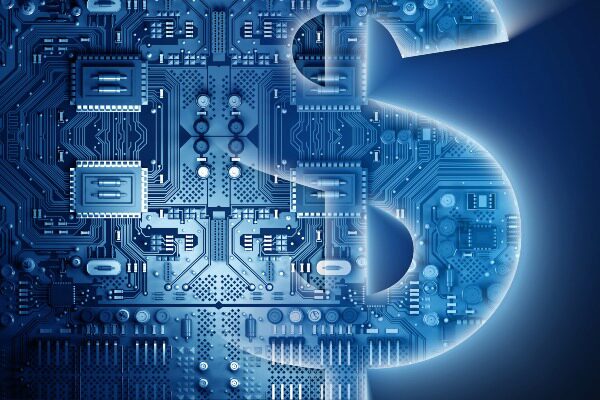 The amount of data available to business owners continues to grow exponentially, which is helping leaders transform their businesses.
The amount of data available to business owners continues to grow exponentially, which is helping leaders transform their businesses.
To get an idea of how much potential there is, the volume of data created, captured, copied, and consumed worldwide grew over the previous decade from 2 zettabytes to 64.2 zettabytes, according to Statista. That figure is expected to grow to more than 180 zettabytes by 2025.
All this data gives businesses deeper insight into how to effectively scale their businesses and better serve customers. Data’s not the only technology that is enabling positive disruption. As technology evolves, it gives companies increased access to products and services that can accelerate their business models.
This is the digital economy. As global industries rapidly evolve due to digital transformations in infrastructure, products, and services, more economic activity continues to be fueled by and dependent on digital technologies.
Digital Economy Defined
There are several variations of a digital economy definition. Global management consulting company Deloitte defines digital economics as an economic activity that’s generated by human and technology connections formed online.
Research publisher, The Conversation, explains that the digital economy reflects how digital technology affects production and consumption, “including how goods and services are marketed, traded, and paid for.”
The meaning of a digital economy continues to evolve alongside technological advancements. The current digital economy focuses on the way digital technologies, services, products, techniques, and skills are integrated across economies in digitalization.
Integration With the General Economy
The digital economy also relates to how digital technologies are integrated with the economy in general.
For example, a small shop might use an e-commerce platform to expand its sales to include the entire country. A farm might use consumer trend forecasting to pivot to more plant-based products. The blockchain helps banking customers protect their financial security and improve the customer experience in their online banking app.
For platform-centered businesses, such as the on-demand ridesharing app, Uber, or accommodations booking of Airbnb, digital-focused models also illustrate how connected technology is changing the way consumers shop and what they demand of services.
The Growth of the Digital Economy
The variety of definitions can make the digital economy’s financial impact challenging to measure. The Bureau of Economic Analysis (BEA) has created a method that shows its effect. In a 2022 report, the BEA measured the impact of the digital economy by measuring:
- Infrastructure, including hardware and physical materials that support the use of computer networks and the digital economy, including information and communications (ICT) goods and services
- Software and priced digital services, related to communication and computing that are performed for a fee charged to the customer
- E-commerce margins, defined as the remote sale of services and goods over computer networks
Digital technology expansion
The BEA report found that the digital economy made up 10.2%, or $2.1 trillion of the U.S. GDP in 2020. That was a result of 6.3% average annual growth from 2012–20, led by expansion in infrastructure and e-commerce.
While that report provides insights into how much economic activity actual digital technology and services provide, the digital economy extends beyond that. When you consider that digitalization is having a growing presence across diverse industries, most economic activity may be classified as part of — or influenced by — today’s digital economy.
Why the Digital Economy Matters for Business Leaders
Any business that uses data analytics, artificial intelligence, blockchain, Internet of Things (IoT) technology, cloud computing, or any type of internet-based service, is part of the digital economy.
Businesses that harness technological data and turn it into data intelligence can gain competitive advantages. Data can be used to:
- Improve understanding of target consumers
- Transform business models
- Create better products and services
- Develop more efficient processes
In addition to the consumer-facing side of business, digital transformations have affected other parts of business.
For example, we’ve seen the rise of remote work and digital collaboration in recent years. A 2022 study of 25,000 Americans by McKinsey & Company found that 58% of Americans want to work from home at least one day a week while 35% want the option to work from home full-time.
Embracement by the business community
A 2021 Frontiers in Psychology review of studies concluded that organizations have to embrace digital technologies and transform to remain competitive and survive. Companies that survive in the coming years will become part of the digital economy, even if that’s only because they’re using digital technologies like online communication for team collaboration.
The digital economy has caused customers to expect more from businesses. They want to interact with, purchase from, and get answers to questions from businesses when they want, where they want, in a way that meets their needs at any moment.
Such demand has contributed to the rise of omnichannel marketing and the creation of user-friendly apps to facilitate more meaningful relationships between brands and consumers.
The Digital Economy Impacts All Businesses
Whether a business embraces it or not, the digital economy has an impact across all industries. It’s realistic to speculate that one day, everything will be a part of the digital economy because all economic activity will be affected by digital transformation.
The sheer power of data alone can give companies leverage by helping them better understand their industry and their customers. As more people increase their use of technology, there will be more insights about consumers that influence how companies evolve.
Digital economy enables products and services to scale exponentially
As the digital economy enables products and services to scale exponentially, platforms can make more products and more complex services available to more people. It’s up to business leaders to research and determine how to use digital transformation, including the network effect to shape their business models.
Learn More About Digital Transformation
If you’re interested in learning more about topics like these and want to discover the latest from experts in digital transformation, consider:
- Wharton Online’s Digital Leadership Certificate Program, which covers Leadership in the Age of Digital Disruption, Managing in the Global Digital Economy, Artificial Intelligence for Business, and Removing Barriers to Change in Organizations
- Wharton Online’s Business Analytics Specialization, which includes coursework in Customer Analytics, Operations Analytics, People Analytics, and Accounting Analytics
If you’re interested in training your workforce on topics like these, we have digital transformation options for business teams, too. Request information.



